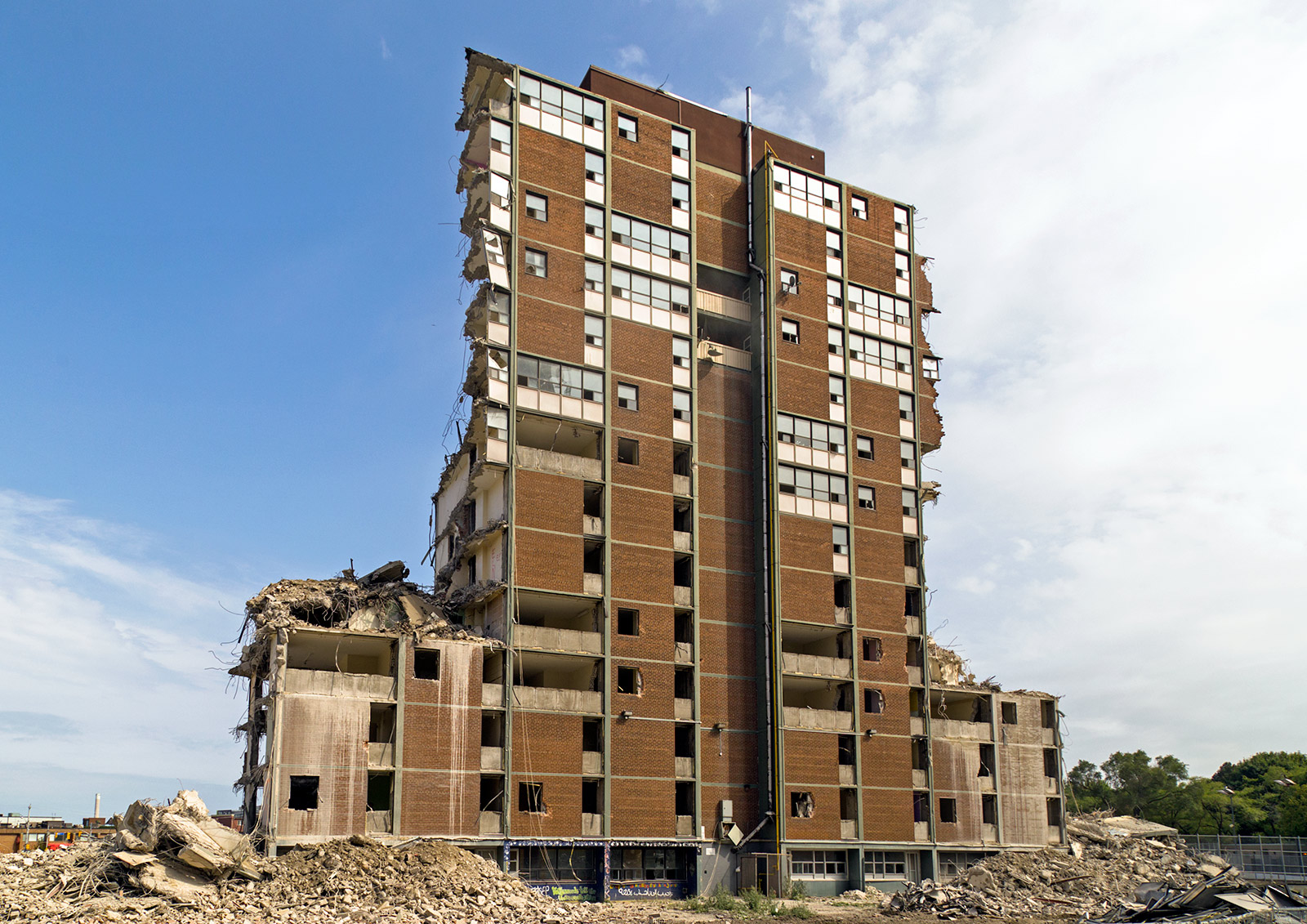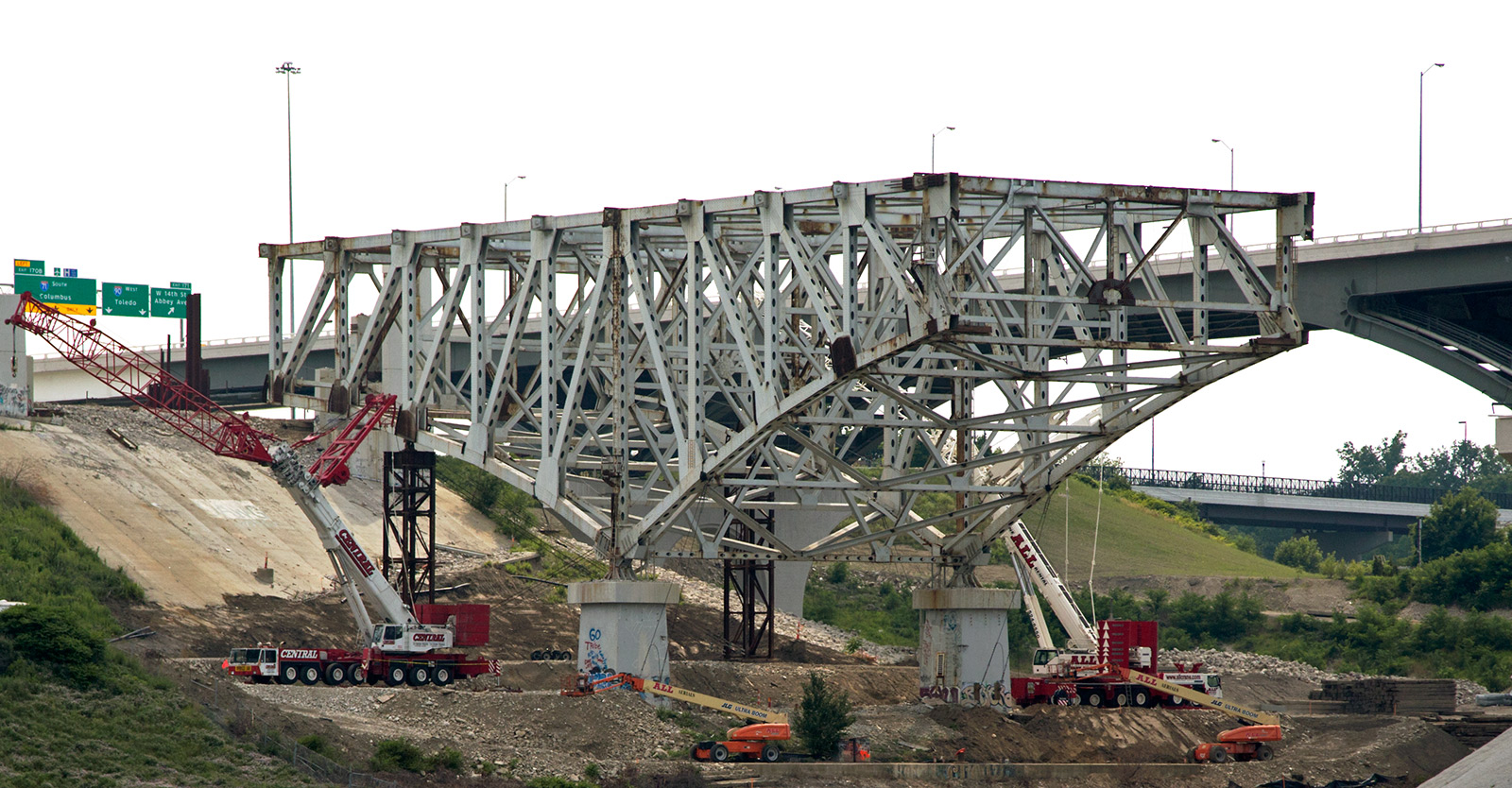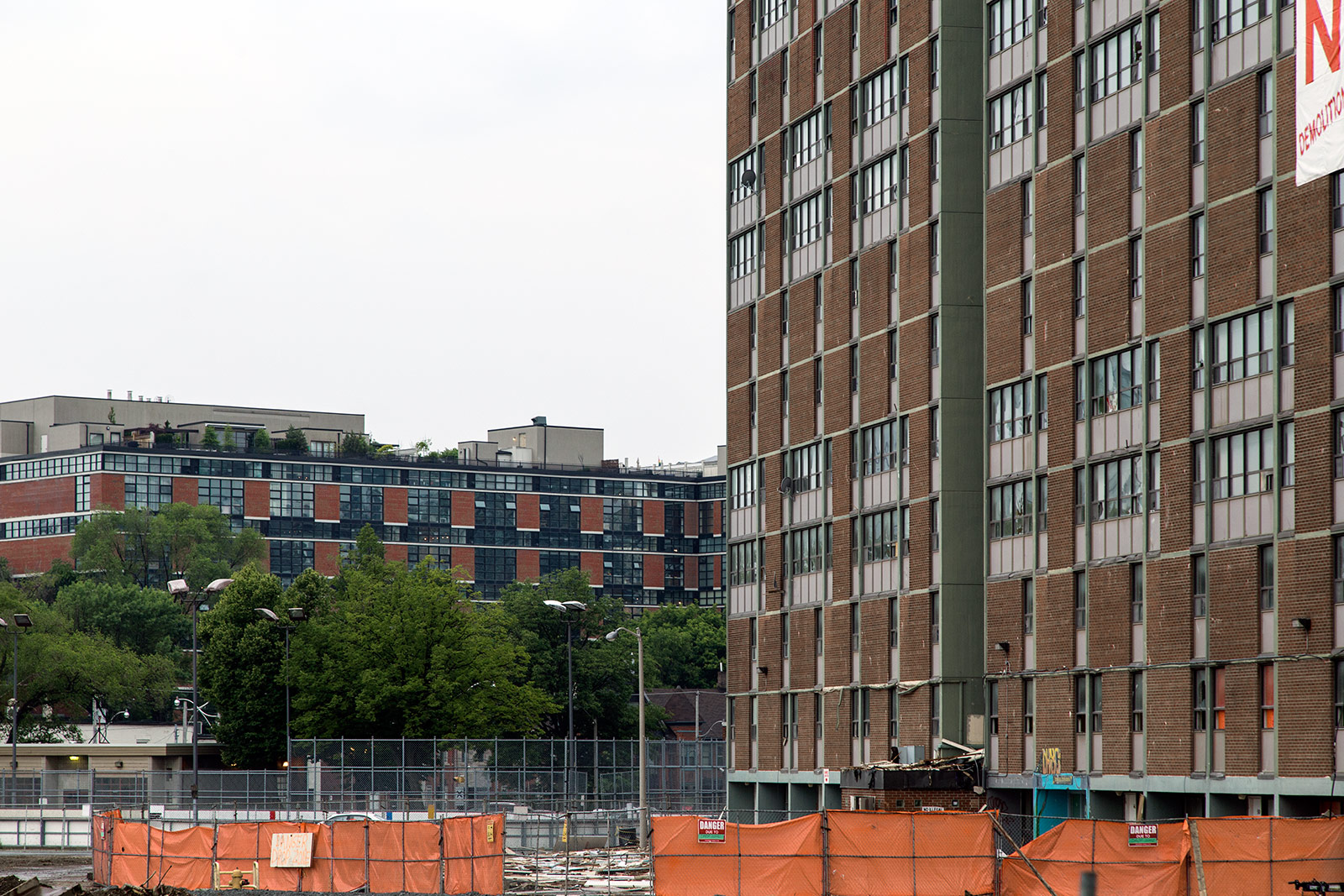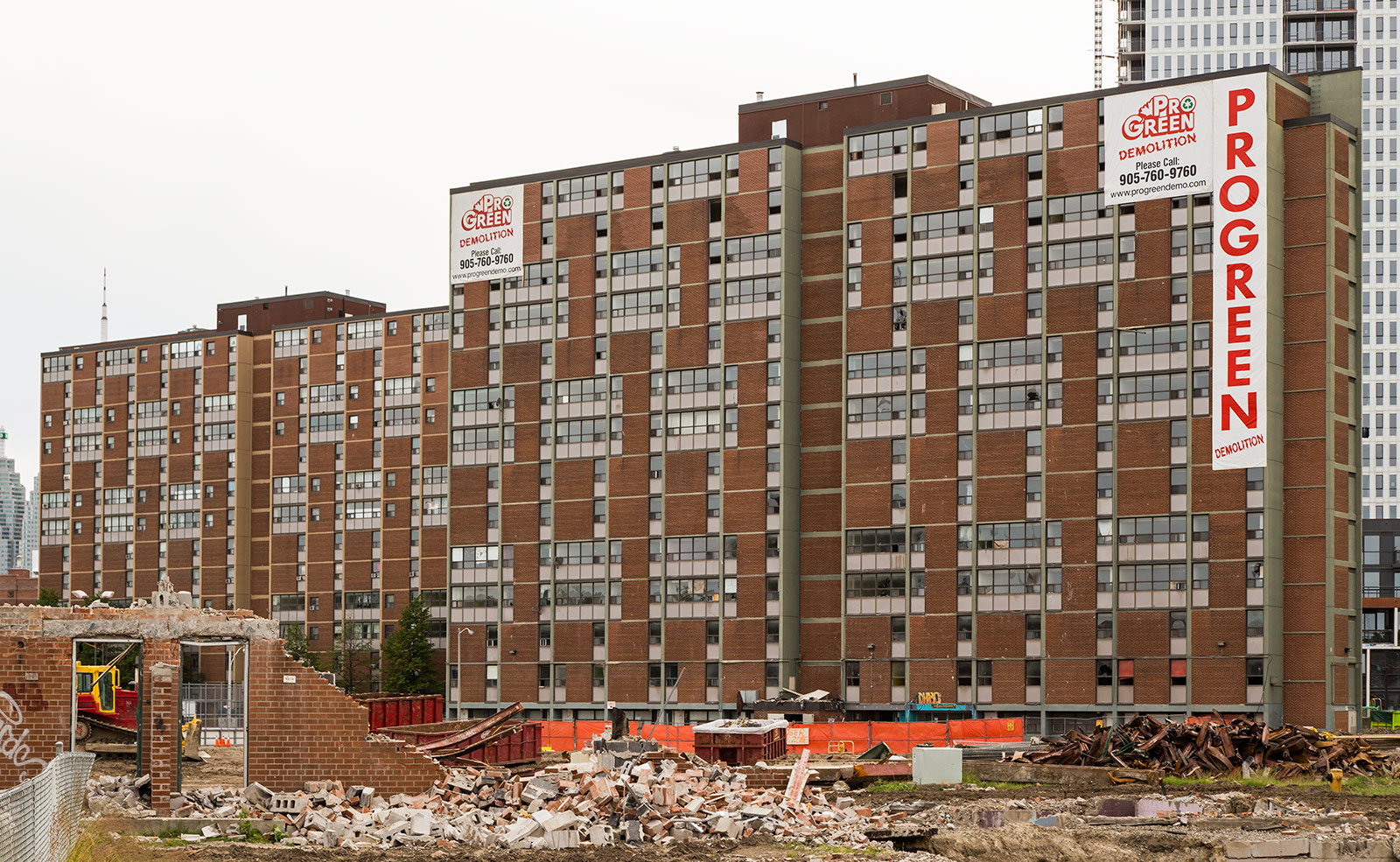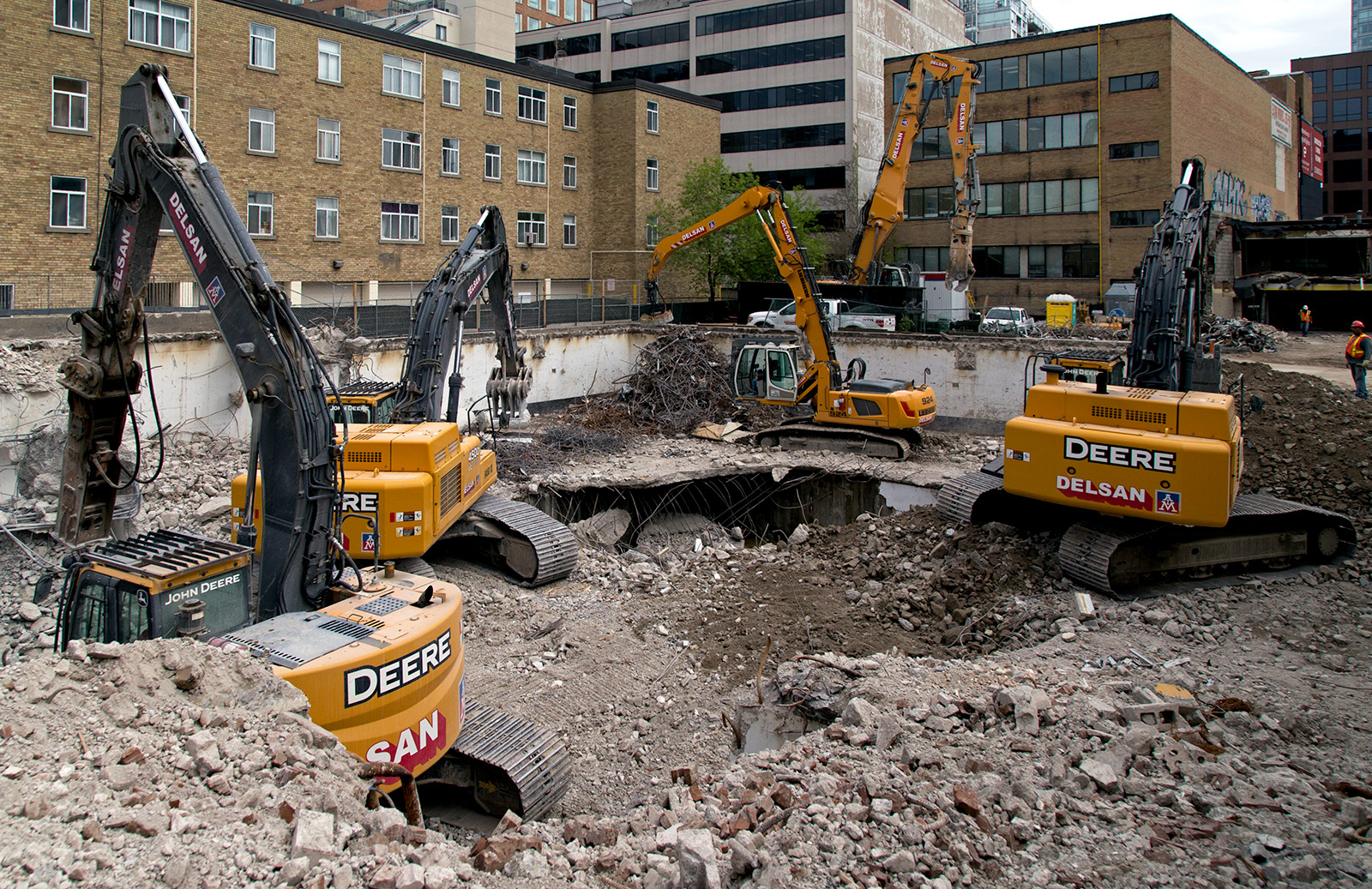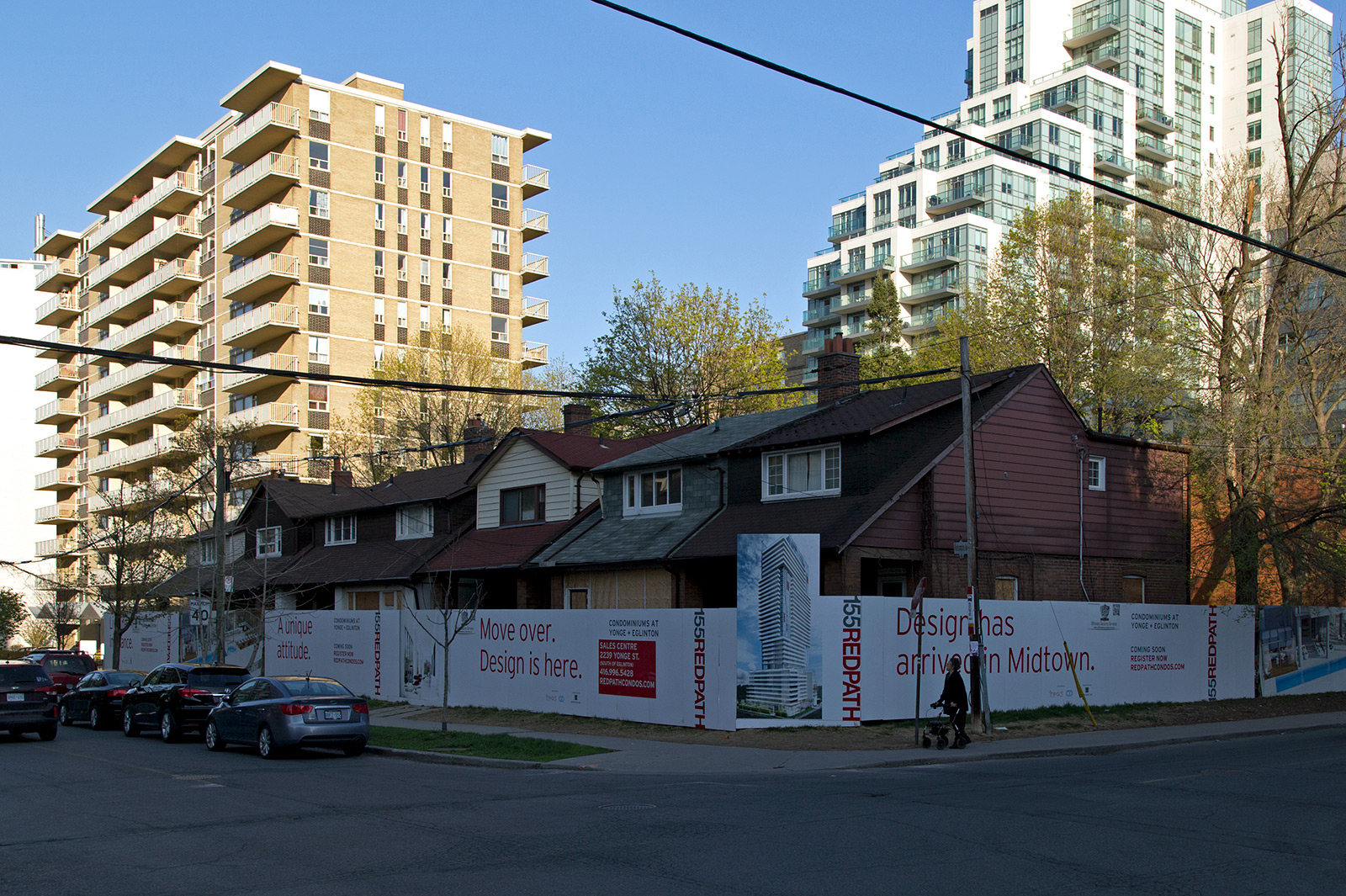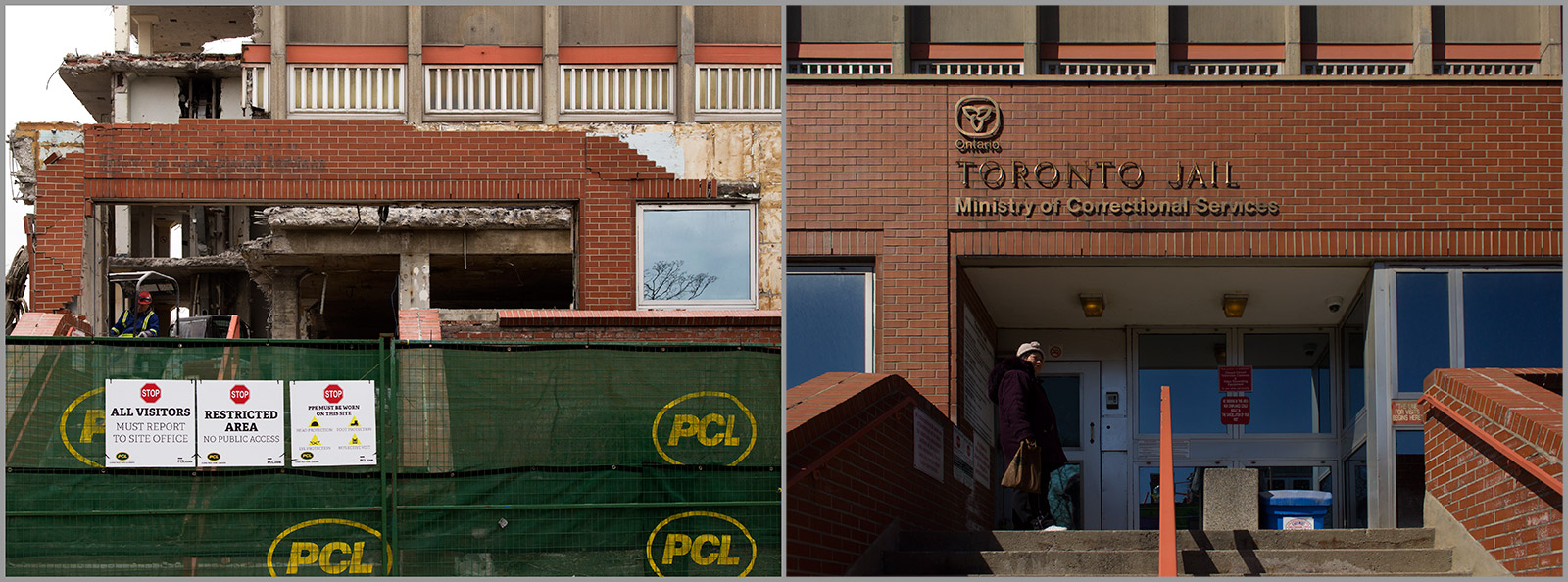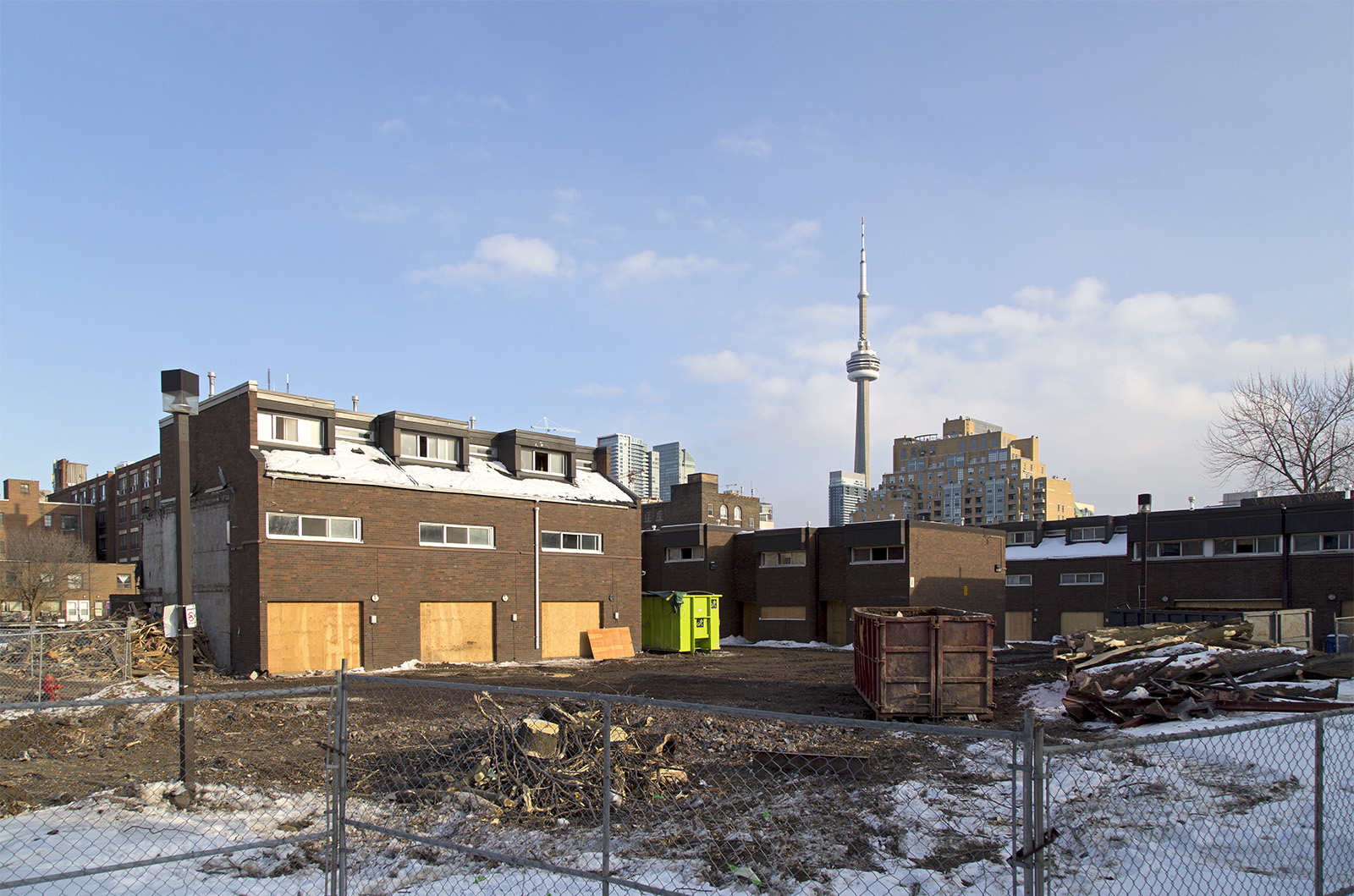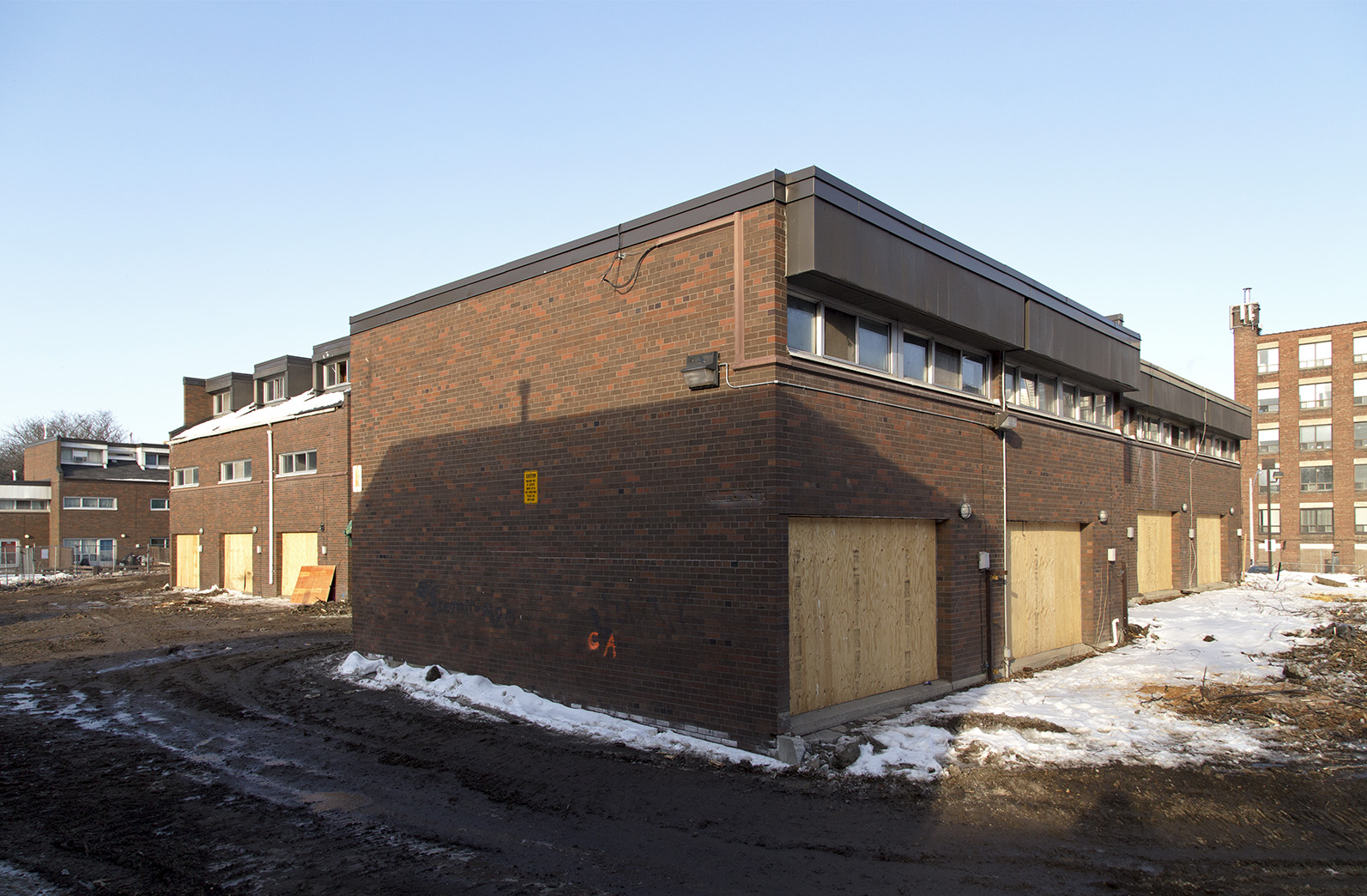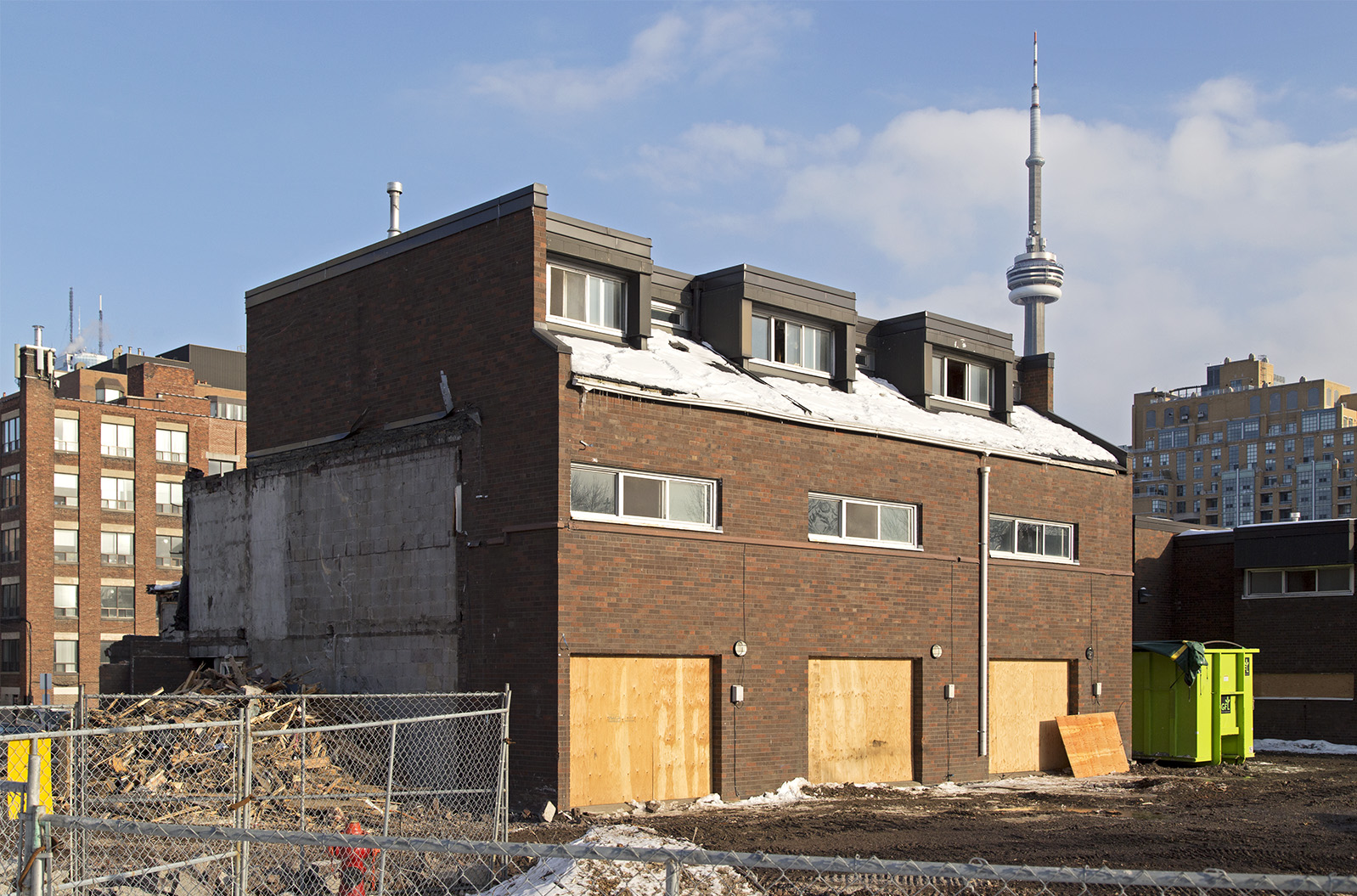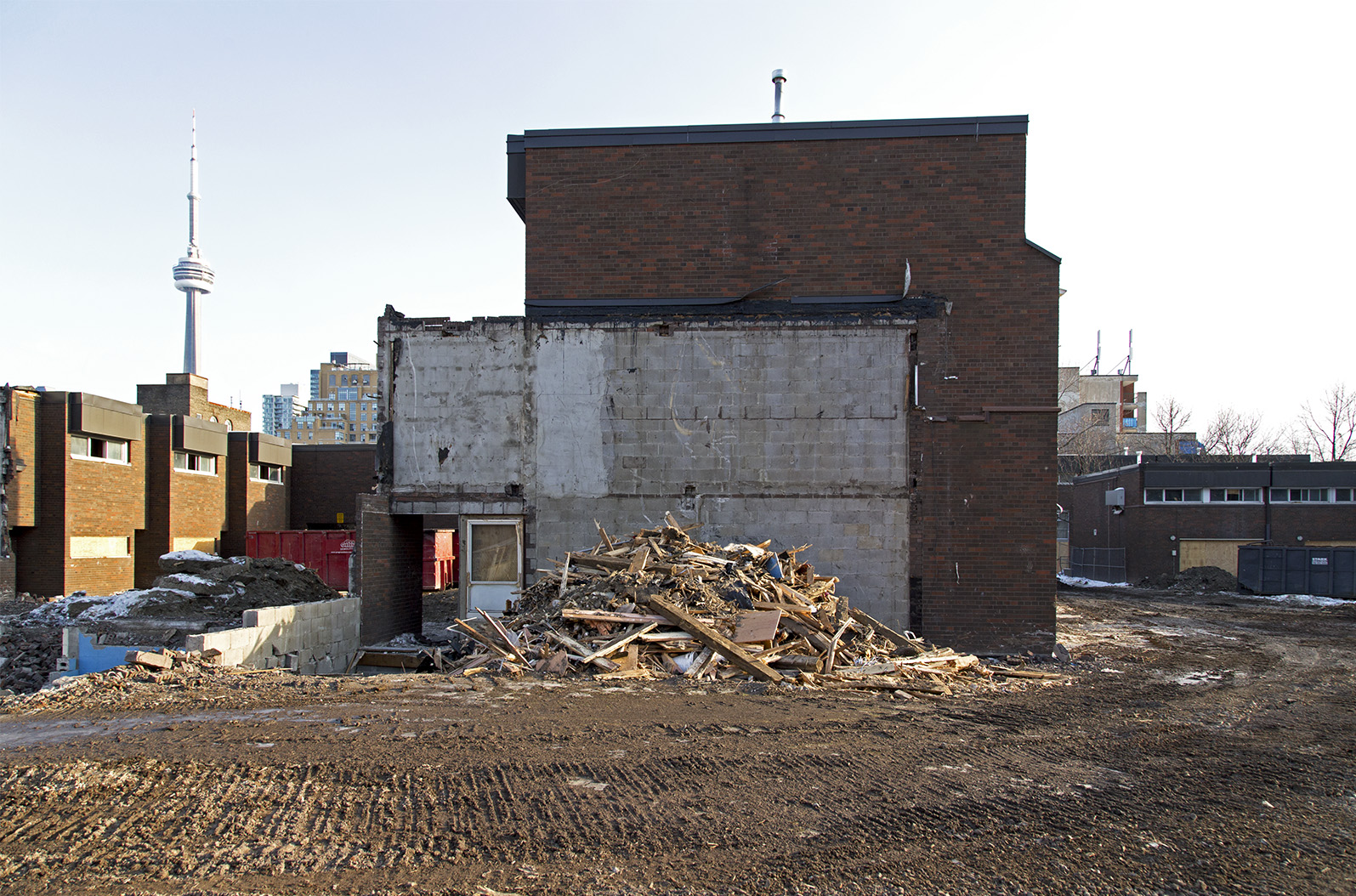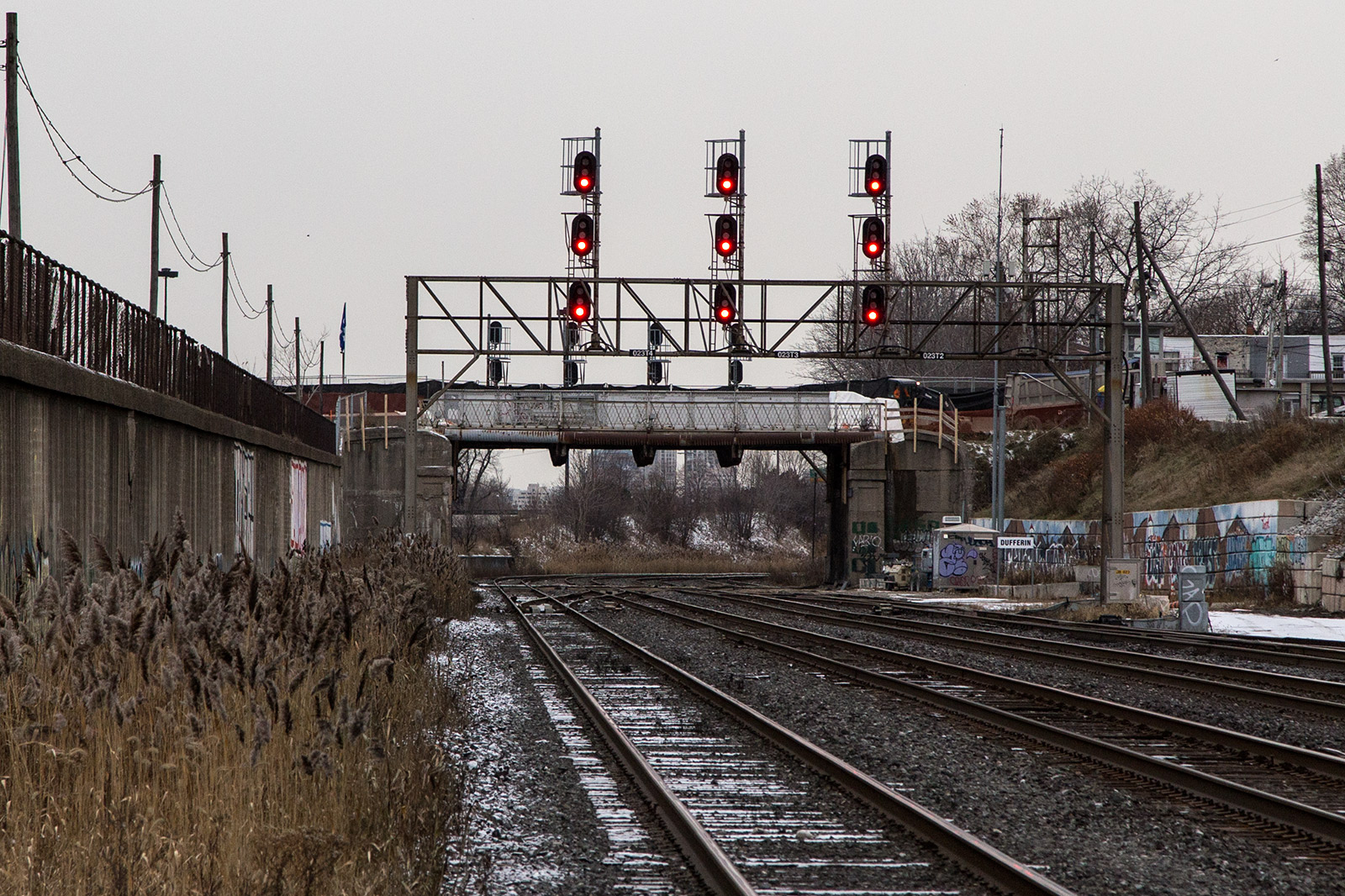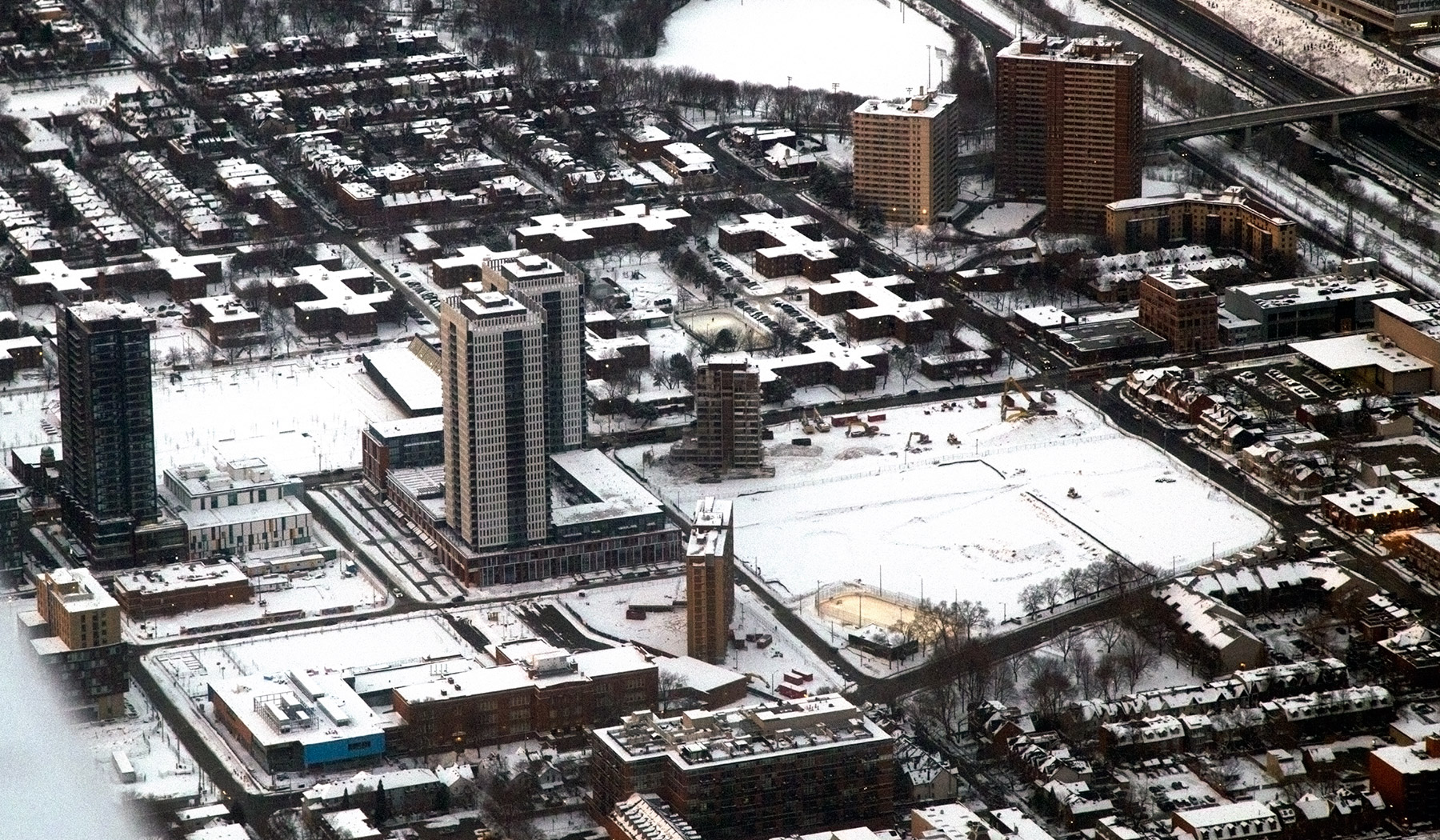
Tag Archives: demolition
20150208. New and old contrast vividly in Toronto’s Regent Park during the demolition of its 2nd last modernist tower.
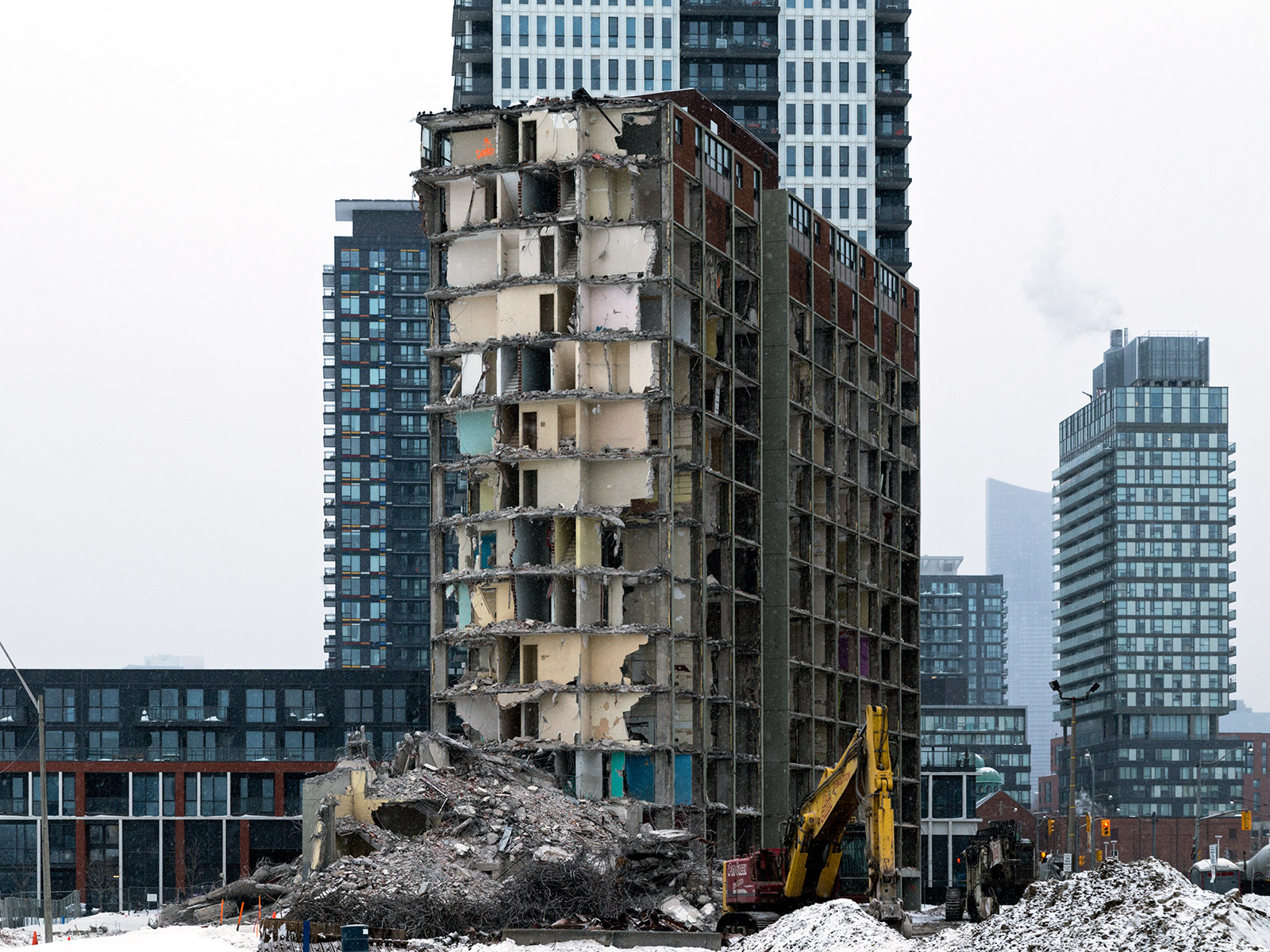
20150125. A view of many rooms in the 4th Dickinson modernist high-rise demolition in Toronto’s Regent Park.
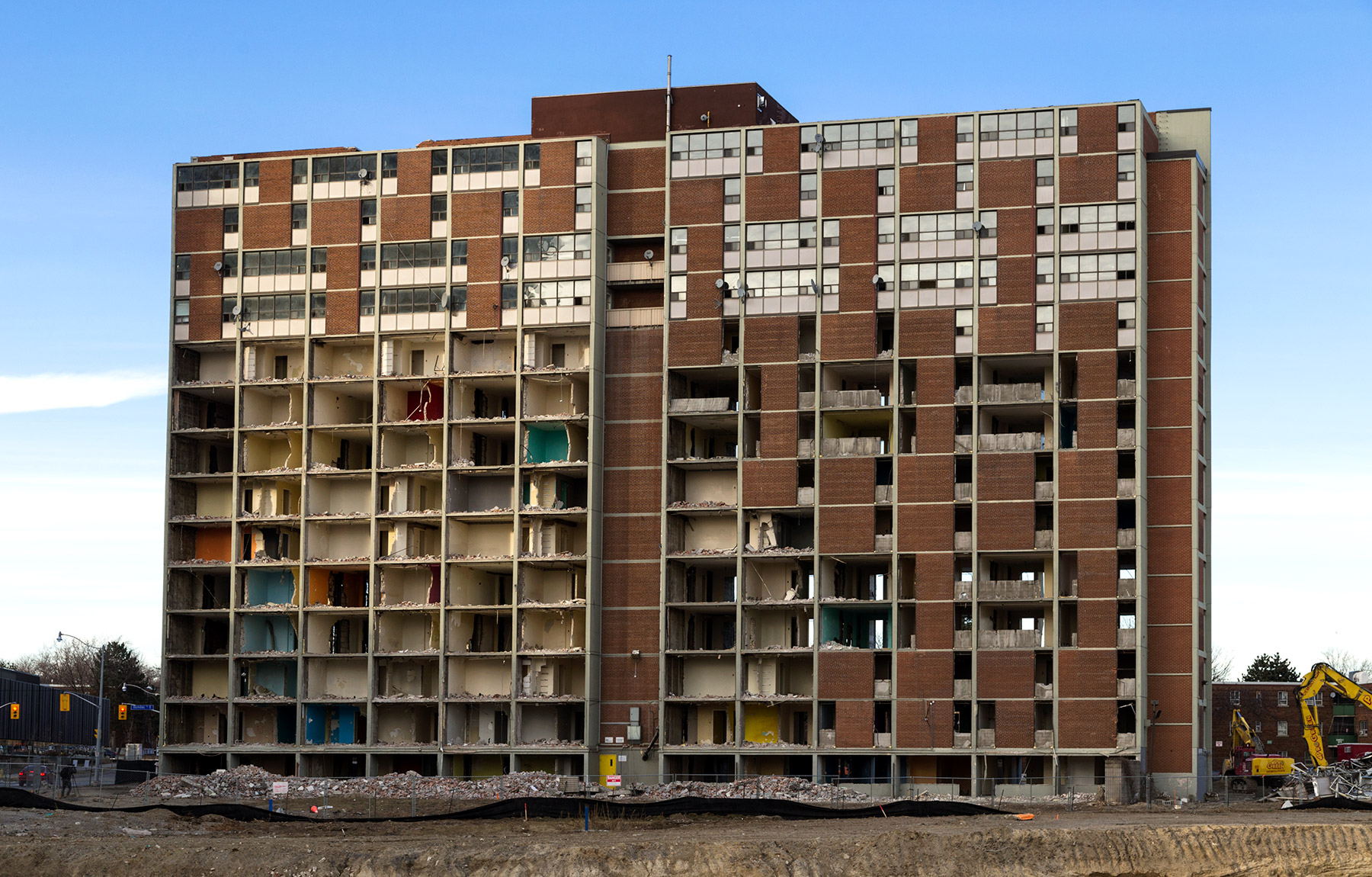
20150122. Goodbye Guvernment. This complex in Toronto will meet the wrecking ball next week.
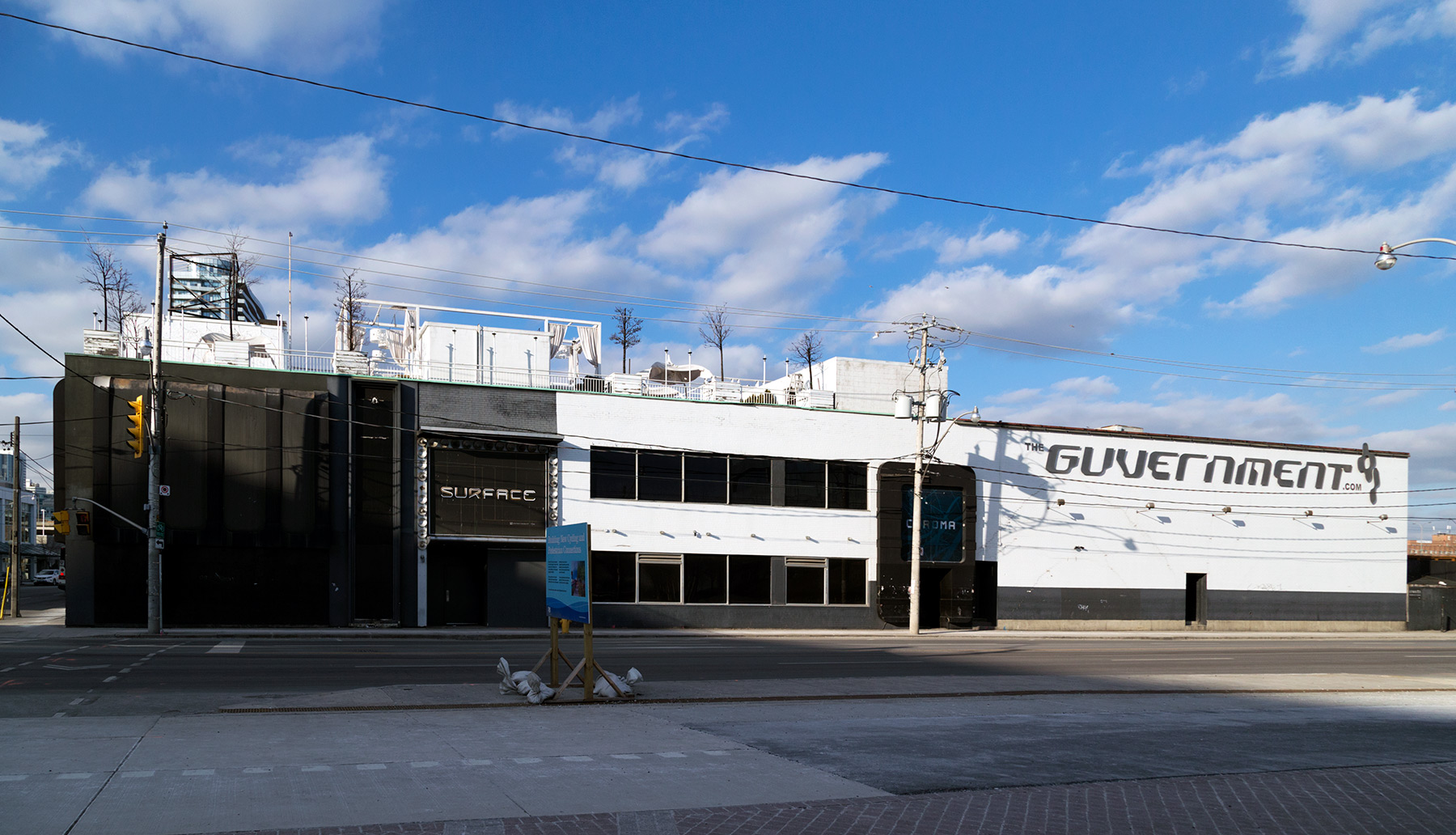 The Guvernment will give way to the Daniels Corporation for a commercial/residential community.
The Guvernment will give way to the Daniels Corporation for a commercial/residential community.
20141230. Demolition of these landmark silos (c.1893) has commenced in Toronto’s Junction neighbourhood.
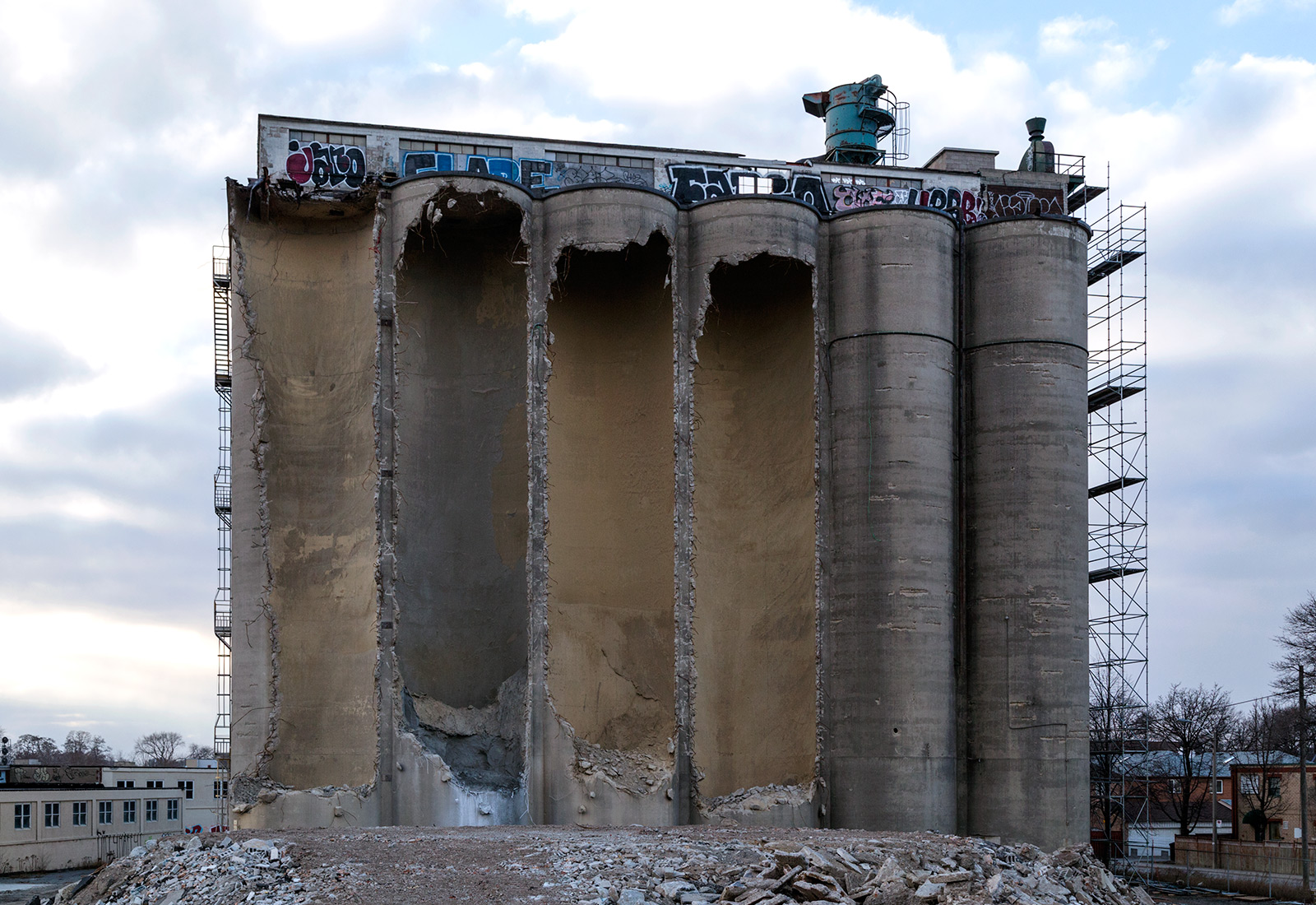 These silos have a long history. Once they were the Campbell Flour Mills and were most recently owned by St. Marys Cement. There is talk about the site being used for a “suburban style plaza with surface parking” probably not unlike the Stockyards Mall recently completed nearby.
These silos have a long history. Once they were the Campbell Flour Mills and were most recently owned by St. Marys Cement. There is talk about the site being used for a “suburban style plaza with surface parking” probably not unlike the Stockyards Mall recently completed nearby.
20141229. The remaining Inn on the Park building (c.1971) at Eglinton and Leslie in Toronto stands in a half demolished state.
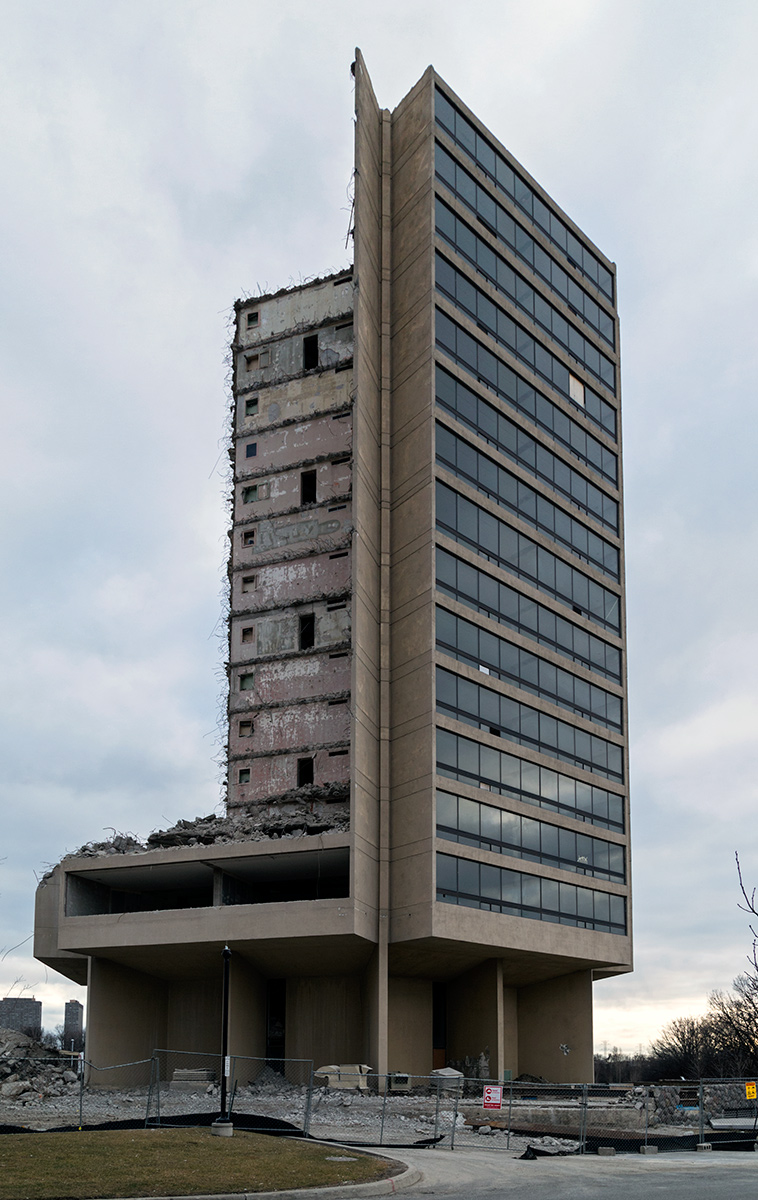 According to the Progreen Demolition website, this is one of the highest buildings (25 storeys) ever demolished in the GTA. The first Inn on the Park building, a modernist structure by architect Peter Dickinson was demolished in 2006.
According to the Progreen Demolition website, this is one of the highest buildings (25 storeys) ever demolished in the GTA. The first Inn on the Park building, a modernist structure by architect Peter Dickinson was demolished in 2006.
20141129. Toronto’s bleak Alexandra Park where units with wooden windows await demolition.
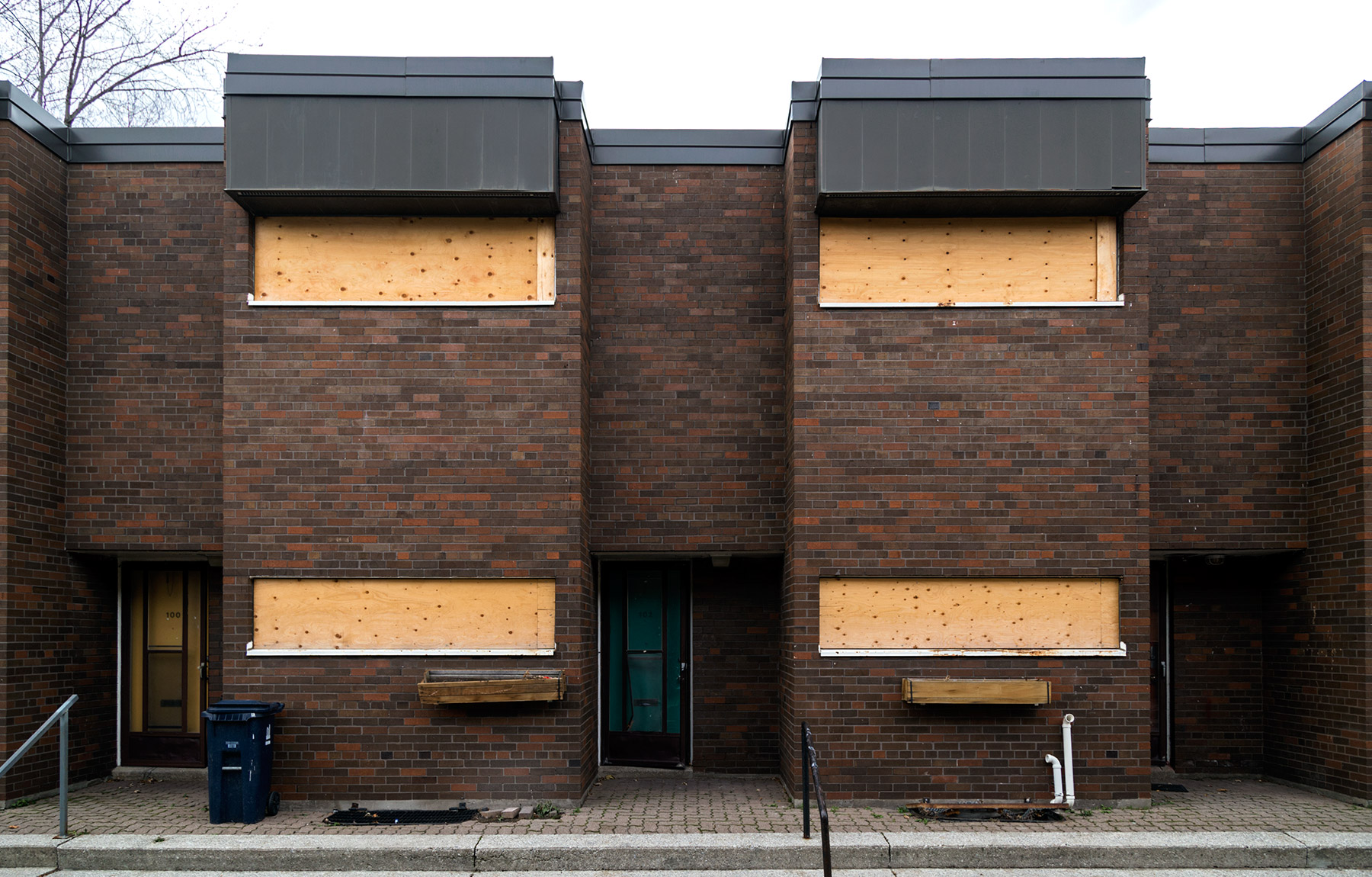
20141127. Walking the empty laneways of Toronto’s old (brutalist?) Alexandra Park before redevelopment.
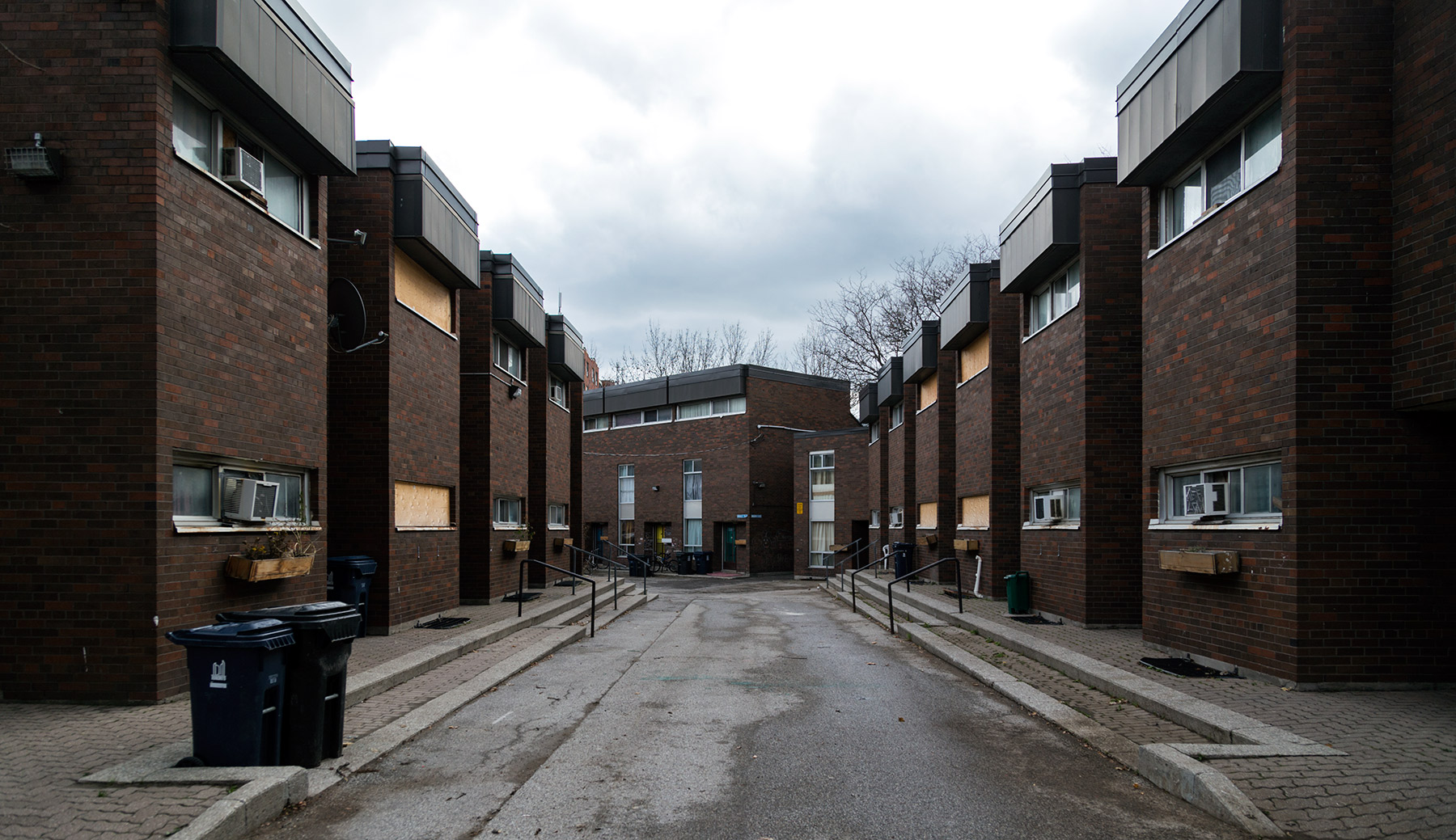
20141108. Rochester’s Beebe Station Switch House. The historic power plant faces demolition.
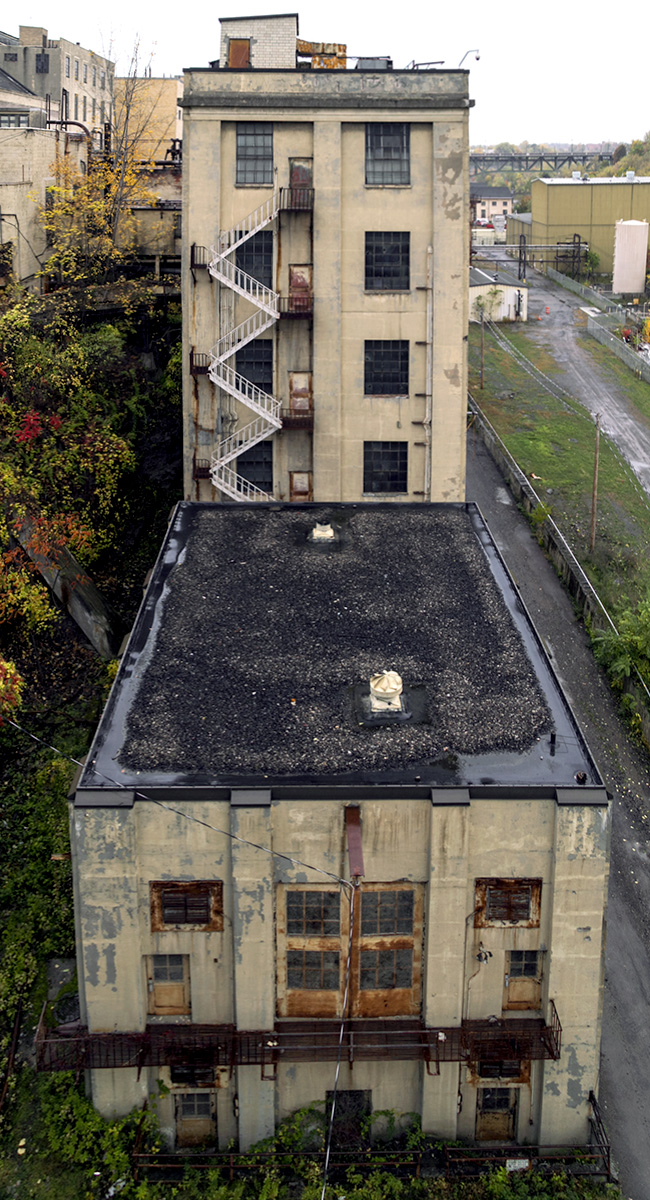
20141027. Soon to be the last of 5 1958 modernist high-rises in Toronto’s Regent Park, will this empty building’s heritage status save it?
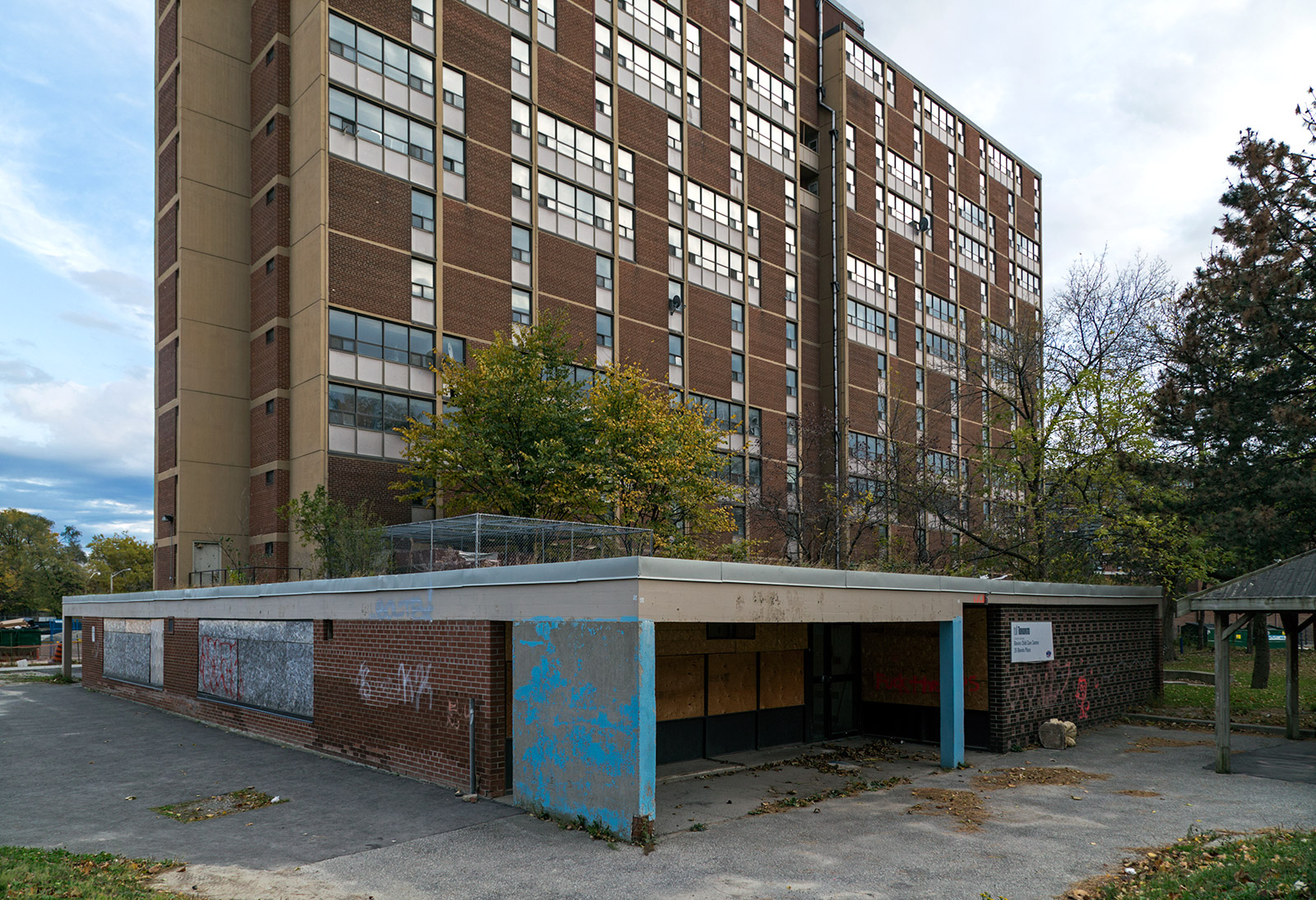
20140822. Modernist high-rise demolition cross-section in Regent Park, Toronto.
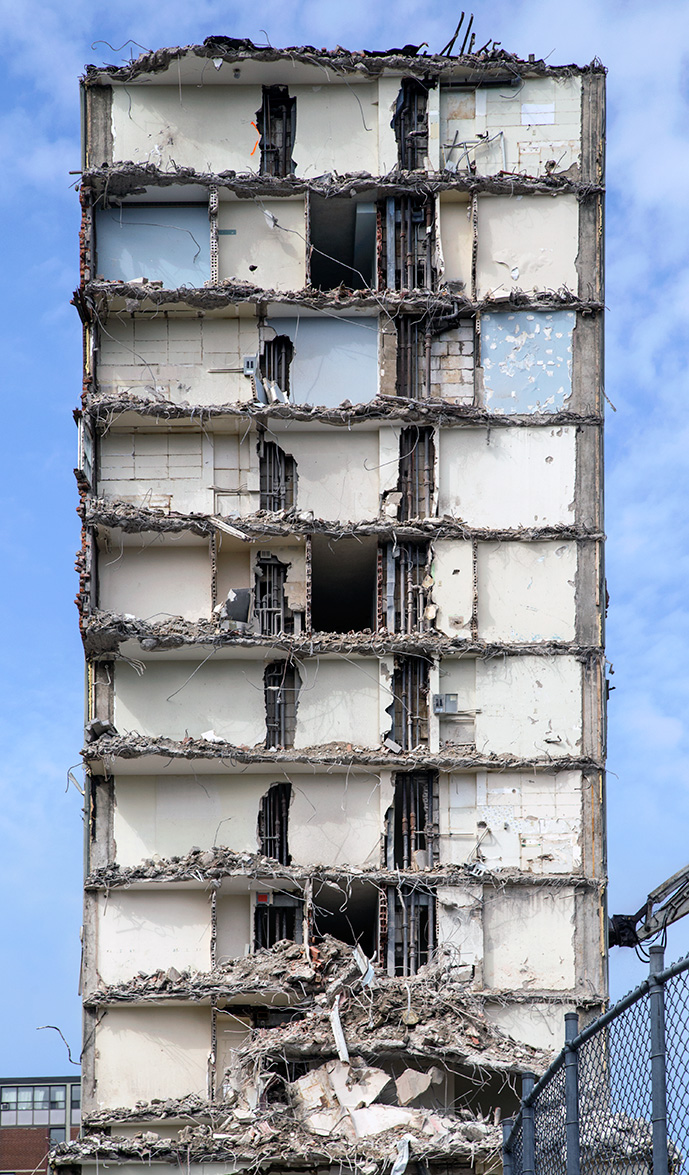 We should applaud the revitilization in Regent Park but should also appreciate the design of these modernist towers before all five are gone.
We should applaud the revitilization in Regent Park but should also appreciate the design of these modernist towers before all five are gone.
They were very unique. John Bentley Mays did a good job describing these apartments: “Every one of the five high-rises is a stack of 97 one-, two- and three-bedroom apartments, each disposed, like a small townhouse, on two floors. By eliminating corridors on every second floor — the elevator skips the floors without hallways — Dickinson was able to open out the common area in each apartment to the width of the whole slab. The results: a sense of spaciousness, light coming from two directions, good cross-ventilation and views of Lake Ontario for almost every resident of the towers.”

